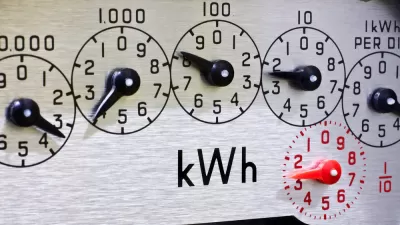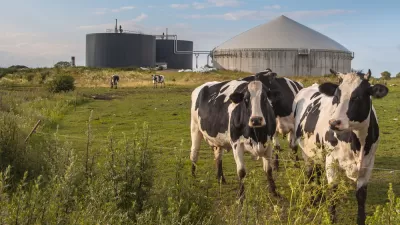A pair of articles in The New York Times look at two different kinds of waste generated from North Dakota's booming oil industry: natural gas from oil wells is burned due to the absence of pipelines, and the disposal of waste in landfills.
Clifford Krauss writes about the controversial practice of burning, or flaring, natural gas produced at oil wells in the Bakken Formation. The practice is being litigated not by environmental organizations concerned about the huge amounts of carbon dioxide generated, "producing emissions equivalent to more than two medium-size coal-fired power plants", but by landowners "seeking millions of dollars in lost royalties from some of the nation’s largest oil companies".
Roughly 1,500 fires burn above western North Dakota because of the deliberate burning of natural gas by companies rushing to drill for oil without having sufficient pipelines to transport their production. With cheap gas bubbling to the top with expensive oil, the companies do not have an economic incentive to build the necessary gas pipelines, so they flare the excess gas instead.
Shifting from the air to the ground, John Eligon writes about a lawsuit filed by the Sorenson family in Ross against a second cousin who has leased his neighboring land "to install a landfill to dispose of solid drilling waste on a golden 160-acre wheat field."
“I’m concerned not if it leaks, it’s when it’s going to leak over there,” Ms. Sorenson, 42, said.
Both cases illustrate how fast the oil output has been growing in what is now the nation's second largest oil producer (after Texas). The lack of pipelines for natural gas is matched by the lack of pipelines for oil, forcing producers to resort to moving crude-by-rail, a practice that has its own set of problems, illustrated by the Lac-Megantic, Quebec conflagration in July and Saturday's explosion in Gainford, Alberta.
However, the landfill disposal of oil waste differs from from flaring in that landfills are seen as an environmentally preferred alternative to disposing the oil waste on-site.
Industry experts argue that landfills are built with better technology and safeguards to prevent environmental hazards than dumps at drilling sites. And it is safer to have a few central dumps that are monitored than a waste pit on each of the thousands of drilling sites throughout the Bakken shale field, said John McCain, the executive vice president and principal engineer at Carlson McCain, the engineering company designing the landfill proposed in Ross.
For the wheat field to be converted to a landfill, it will need to be rezoned from agricultural to industrial land by the Mountrail County Commission. Regardless of the safety of the landfill, concerns about it are part of the wider concern of the effects of the oil industry on North Dakota's heritage - it's rich farm and ranch land.
“This country has always been ag country as far as raising crops and livestock,” said Dave Hynek, one of five county commissioners who farms for a living. “And once this mineral is depleted — and it will be some day — it will go back to being ag land, and I don’t believe it will ever be as productive as it originally was.”
FULL STORY: Oil Companies Are Sued for Waste of Natural Gas

Planetizen Federal Action Tracker
A weekly monitor of how Trump’s orders and actions are impacting planners and planning in America.

Maui's Vacation Rental Debate Turns Ugly
Verbal attacks, misinformation campaigns and fistfights plague a high-stakes debate to convert thousands of vacation rentals into long-term housing.

San Francisco Suspends Traffic Calming Amidst Record Deaths
Citing “a challenging fiscal landscape,” the city will cease the program on the heels of 42 traffic deaths, including 24 pedestrians.

Amtrak Rolls Out New Orleans to Alabama “Mardi Gras” Train
The new service will operate morning and evening departures between Mobile and New Orleans.

The Subversive Car-Free Guide to Trump's Great American Road Trip
Car-free ways to access Chicagoland’s best tourist attractions.

San Antonio and Austin are Fusing Into one Massive Megaregion
The region spanning the two central Texas cities is growing fast, posing challenges for local infrastructure and water supplies.
Urban Design for Planners 1: Software Tools
This six-course series explores essential urban design concepts using open source software and equips planners with the tools they need to participate fully in the urban design process.
Planning for Universal Design
Learn the tools for implementing Universal Design in planning regulations.
Heyer Gruel & Associates PA
JM Goldson LLC
Custer County Colorado
City of Camden Redevelopment Agency
City of Astoria
Transportation Research & Education Center (TREC) at Portland State University
Jefferson Parish Government
Camden Redevelopment Agency
City of Claremont





























